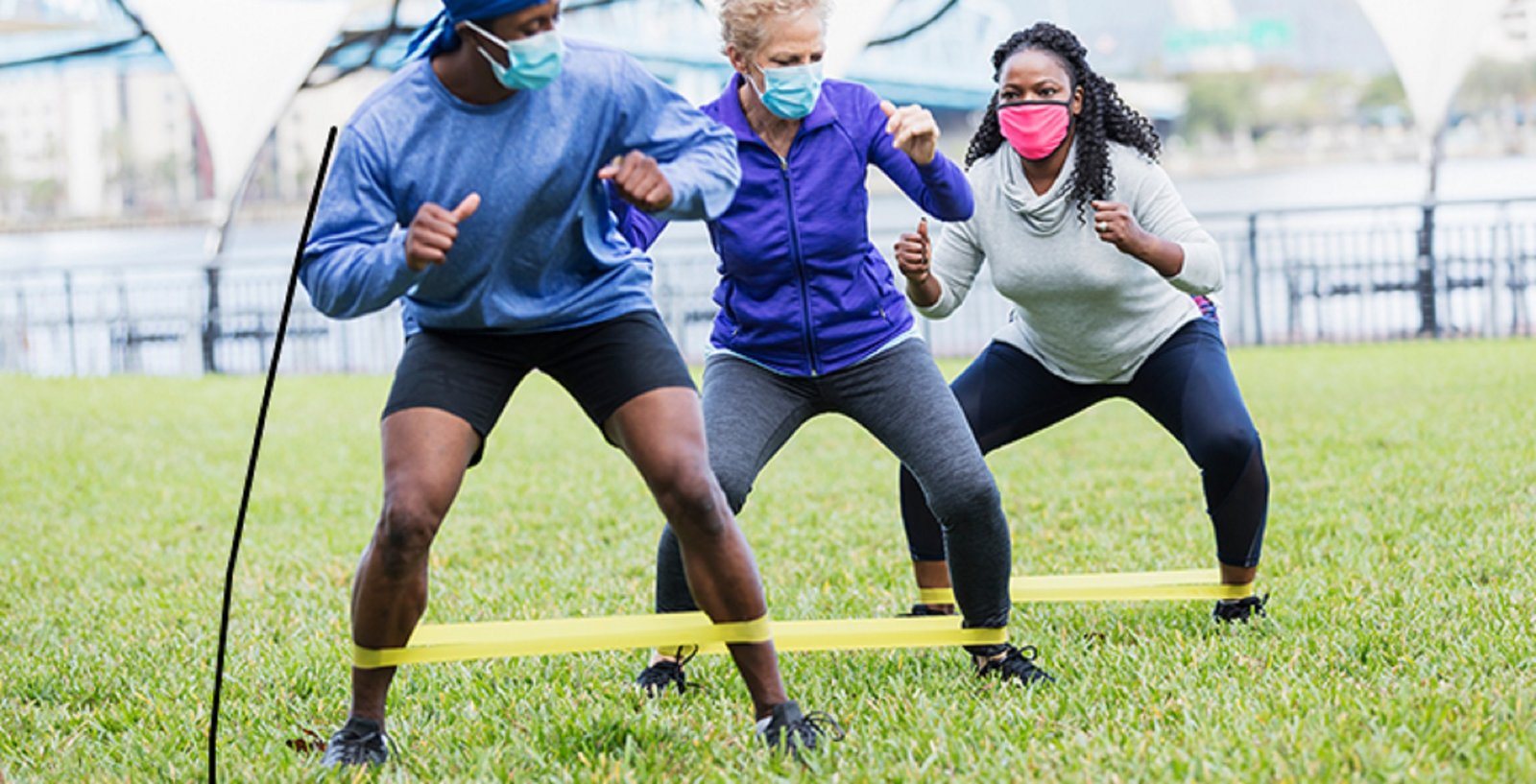Resistance bands: The next best thing for your muscles?
Physical healthArticleJune 20, 2022
They’re versatile, lightweight and portable. And though booty bands – aka resistance bands – don’t always stack high on the must-have gym equipment list, experts say they are worthy of a place in your exercise toolkit. That’s “as long as you know what you are doing”, says high-performance expert Jane Kilkenny.
If you’re not yet familiar with the ins, outs, strengths and limitations of this multipurpose item, here are some facts and exercises to get you started...
“Resistance bands come in various sizes and levels of tension, so they provide versatile workout options wherever you are training, in the gym, at home or outdoors,” says Kilkenny.
They are available in different materials. Latex bands generally have more give and are ideal for abdominal exercises, plus lower and upper body ones; but, according to chiropractor Dr Tianna Buick, they can be uncomfortable, lose tension and bunch and pull on the skin. Fabric bands are typically more comfortable and less stretchy, making them better suited to exercises involving the upper legs rather than upper body. They are “a tad more pricey but something worth investing in,” says Dr Buick.
They’re not useful for building significant strength and size, according to Kilkenny. Instead, she says the “bands are perfect for entry-level strength work, muscle activation and injury rehabilitation”. Activating the glutes correctly can be challenging, which is where bands can help, she says. “However, if you want to develop some significant strength, power and size in the glutes, it will require more complex moves with significant loads to achieve that outcome.”
Adds Dr Buick: Booty bands “aren’t a replacement for resistance-based training and weightlifting…[but] are a great tool for things like prehab/rehab and warm-ups”.
Technique is crucial, says Kilkenny. “If the bands are not used correctly, they can put undue stress on your hips and knees.”
Booty band exercises
Keen to give bands a go? Here are Kilkenny’s four favourite exercises:
- Squats: Place your legs inside the band and position it just above your knees. Stand with feet hip-width apart and sink into a squat position, keeping tension on the band. Return and repeat.
- Crab walks: Position the band just above your knees and sink into a half-squat position. Keeping the body upright, step laterally, leading with the knee, not foot. Take several steps one way, then return.
- Bridges: Lie on your back with your knees bent and the band just above the knees. Lift your hips into a bridge position, keeping tension in the band then return. For an extra challenge, widen your knees at the top and pause before returning your hips to the floor.
- Clams: Lie on your side with knees bent slightly forward and stacked. Keep your hips stacked and body in good alignment from shoulder to ankle. With the band just above your knees, lift the top knee slowly, keeping feet together then slowly lower it back down. You should feel the muscle contraction just behind the hip. For an additional challenge, have the feet elevated.
These exercises are aimed at a general audience. For individual advice, consult an appropriate movement specialist.
